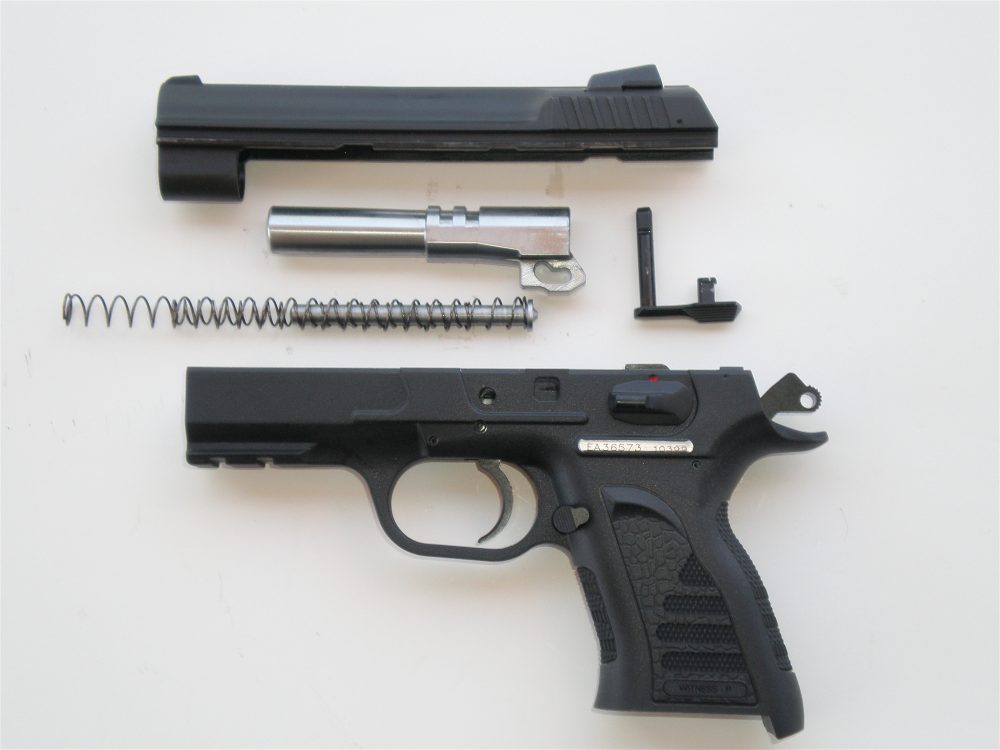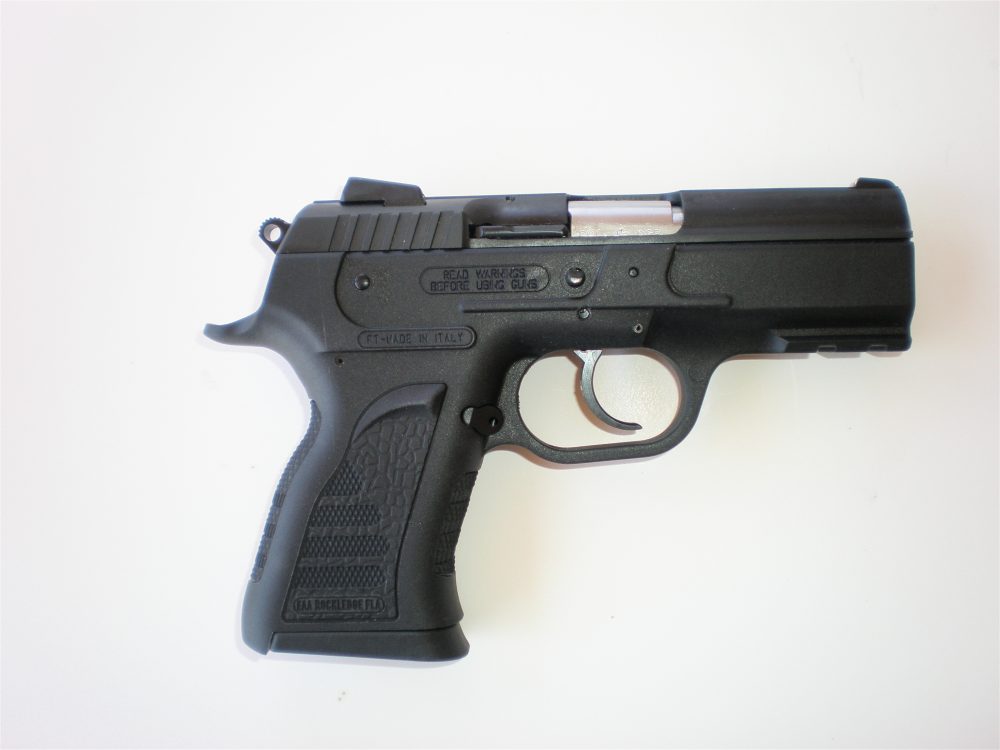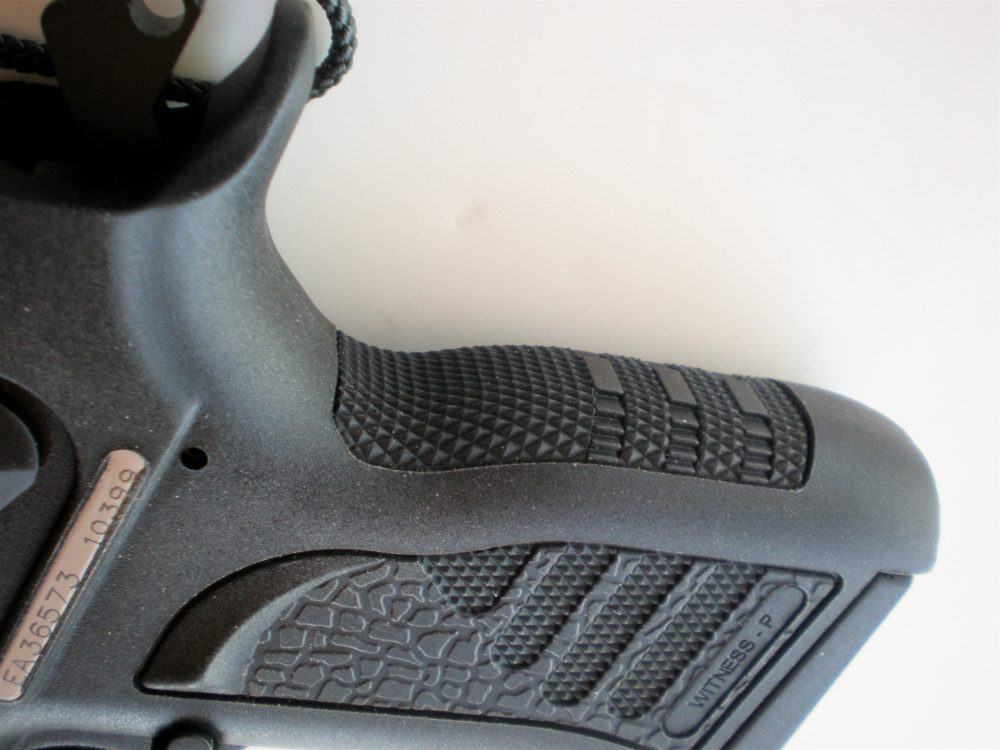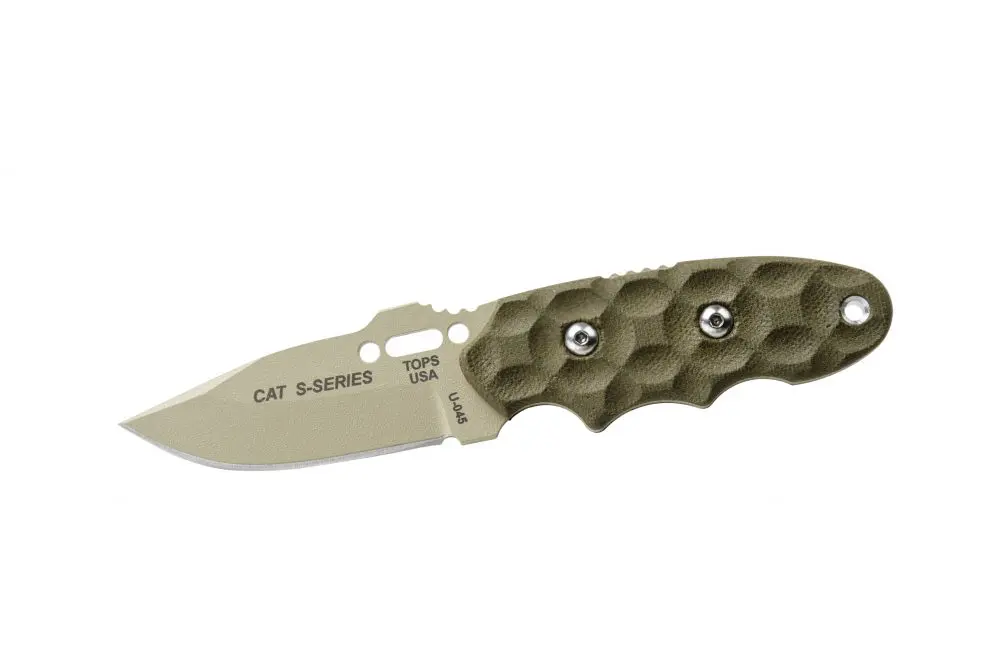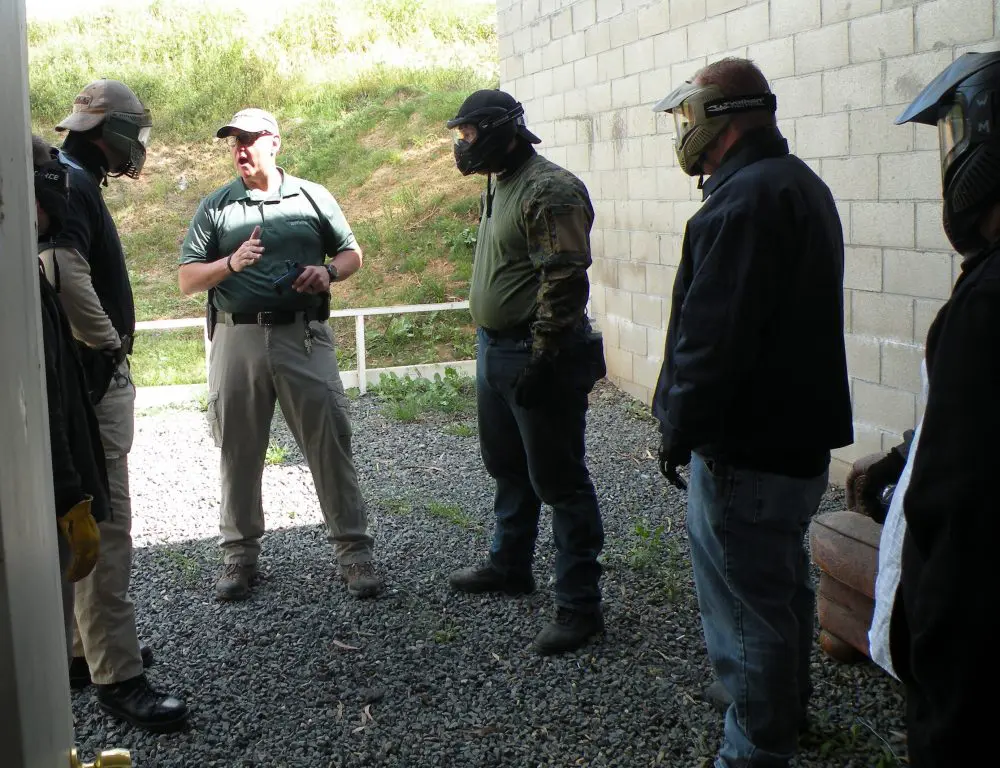Witness Polymer Compact disassembled into main components.
One of the first pistols I reviewed when I began writing for S.W.A.T.—but was still a working street cop—was a Witness pistol from European American Armory (EAA) chambered for the .45 ACP cartridge. I liked it a lot, carrying it and shooting it often.
Though it has been 20 years, that same pistol is still in the family and still sees use—I would not venture a guess as to how many thousands of rounds have gone down its barrel. The few malfunctions it has experienced have normally been traced to magazines or ammunition.
Recently I was asked if I would like to review the latest version of the Witness design, the Witness-P, which has a polymer frame and is available in both full size (4.5-inch barrel) and Compact (3.6-inch barrel). Since smaller pistols are currently in vogue, I chose the Compact for review.
While a true double-action pistol, the Witness can also be carried cocked and locked in single-action. Unlike many pistols, the Witness can be press checked with the safety on.
Right view of Witness Polymer Compact.
The P Compact has an overall length of 7.5 inches, a height of 4.87 measured from the top of the rear sight to the bottom of the magazine, and a width of 1.4 inches. Unloaded weight is 26 ounces. Capacity is eight plus one. Ten-round magazines from the full-size pistol will work in the compact, allowing a person to carry the larger mag(s) for a reload.
Sights on the Witness are of the three-dot type. The front sight is an integral casting, while the rear sight is drift adjustable for windage.
The frontstrap, backstrap and both side panels on the grip are all textured/checkered for a non-slip grip. The pistol has a rail to accept lights or lasers molded into the frame.
The single-action trigger pull measured a very manageable six pounds. My trigger pull scale gauge only goes up to eight pounds, so I was not able to establish the weight of the double-action trigger pull, but it was heavy—very heavy. More on this a bit later.
Left view of Witness Polymer Compact.
Running my hand over the P Compact in a cursory inspection revealed several sharp edges when felt from the front of the pistol. While they will not affect function, they will scrape a holster. If border carry is your thing (wearing inside the waistband without a holster), these edges will likely gouge flesh. These edges can be dehorned, of course, and would only require a bit of cold blue to touch up.
Like the CZ-75 it is based on, Witness pistols have their slide rails on the inside of the frame as opposed to outside the frame as found on most pistols. While I have heard that this placement of the rails can increase accuracy, I cannot prove it as I rarely fire a handgun off a bench, being more interested in practical than “target” accuracy. For self-defense, if you are firing a two-inch group from say, ten yards, you are shooting too slow.
Like all Witness pistols, the P Compact disassembles easily into its main components for maintenance.
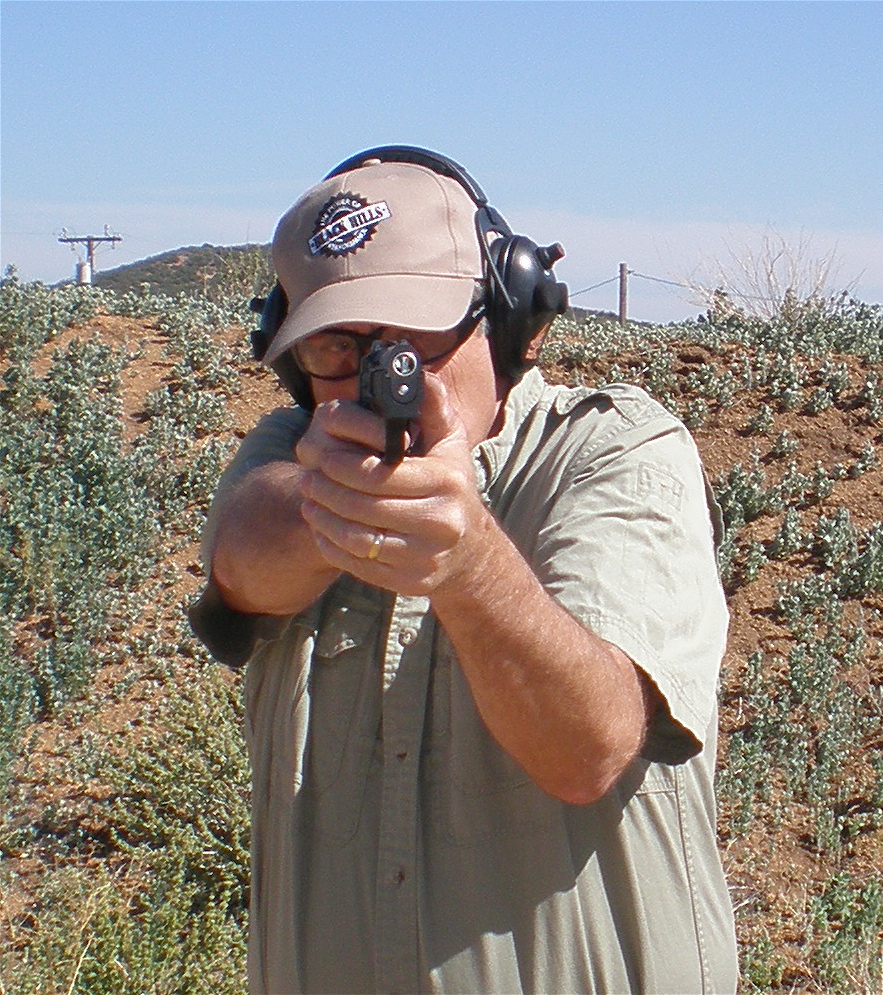
Table of Contents
RANGE EVALUATION
I went to the range with six commercial .45 ACP loads with varying bullet weights and types. I also included one handload, for a total of seven loads to test in the Witness-P. All seven loads were chronographed using a PACT, Inc. Professional model to establish velocities from the 3.6-inch barrel. Velocities were not affected by the short barrel as much as I had anticipated, with all but one load traveling at or above 820 feet-per-second.
After velocities were established, the pistol was fitted with an Insight X2 light/laser unit and was left in place for the remainder of the evaluation to see if any problems would be encountered with a light attached to the rail. None were.
Shooting was done in both single and double-action modes. I mentioned earlier that the Witness-P has a very hard double-action pull, and as such I put a bit more finger on the trigger when shooting double-action, vice just the pad when shooting in the single-action mode. Between using more trigger finger, the contour of the trigger itself and sharp edges at the bottom of the trigger, I developed a fair-sized blister after firing only 200 rounds. Unlike the sharp edges on the outside of the pistol, this is something, in my opinion, that needs to be addressed by EAA at the factory.
Front and back straps have aggressive checkering.
Due to its smaller size and light weight, the Witness-P Compact is a bit more “whippy” than its full-size steel cousin, however, recoil was still very manageable. Using the single magazine that ships with the pistol (sigh) and a ten-round magazine and holster from my original Witness, I managed an 11.1-second El Presidente drill—not world class and not even par, but I was satisfied considering I did it with a pistol I had little trigger time with. Accuracy was good, and all rounds were easily kept inside an eight-inch circle firing controlled pairs up to 20 yards.
By the end of the evaluation, I had put a total of 450 rounds through the P Compact. The only malfunction experienced was a failure to feed with the third magazine. The pistol was beginning to get fairly warm, and I had neglected to lubricate before I started shooting. The pistol was field stripped, properly lubed, and testing resumed with no further problems encountered—with the exception that the blister on my trigger finger was hurting more and more.
While other tactical lights will fit, the Insight X2 does not extend pass the muzzle, keeping a compact package.
SUMMARY
Not to beat a dead horse, but the problem with the sharp edges at the bottom of the trigger needs to be rectified. It would also be great to see the pistol ship with more than one magazine. Magazines, despite the way they are advertised, are not “accessories”—they are the primary feed device for a semiautomatic firearm, making the gun pretty much useless without one. Things break, and the adage “one is none, and two are one” is especially applicable to mags.
Overall, the Witness-P Compact represents a good value for someone looking for a compact pistol shooting a major caliber.
SOURCES:
European American Armory Corp.
Dept. S.W.A.T.
P.O. Box 560746
Rockledge, FL 32956-0746
(321) 639-4842
www.eaacorp.com
Black Hills Ammunition
Dept. S.W.A.T.
P.O. Box 3090
Rapid City, SD 57709-3090
(605) 348-5150
www.black-hills.com
Federal Cartridge Company
Dept. S.W.A.T.
900 Ehlen Drive
Anoka, MN 55303-7503
(800) 322-2342
www.federalcartridge.com
Insight Technology
Dept. S.W.A.T.
23 Industrial Dr.
Londonderry, NH 03053
(877) 744-4802
www.insighttechnology.com
PACT Inc.
Dept. S.W.A.T.
P.O. Box 535025
Grand Prairie, TX 75053
(800) 722-8462
www.pact.com
PMC Ammunition
Dept. S.W.A.T.
P.O. Box 940878
Houston, TX 77094-7878
(281) 759-9020
www.pmcammo.com
Taurus International Mfg., Inc.
Dept. S.W.A.T.
16175 NW 49 Ave.
Miami, FL 33014
(800) 327-3776
www.taurususa.com

